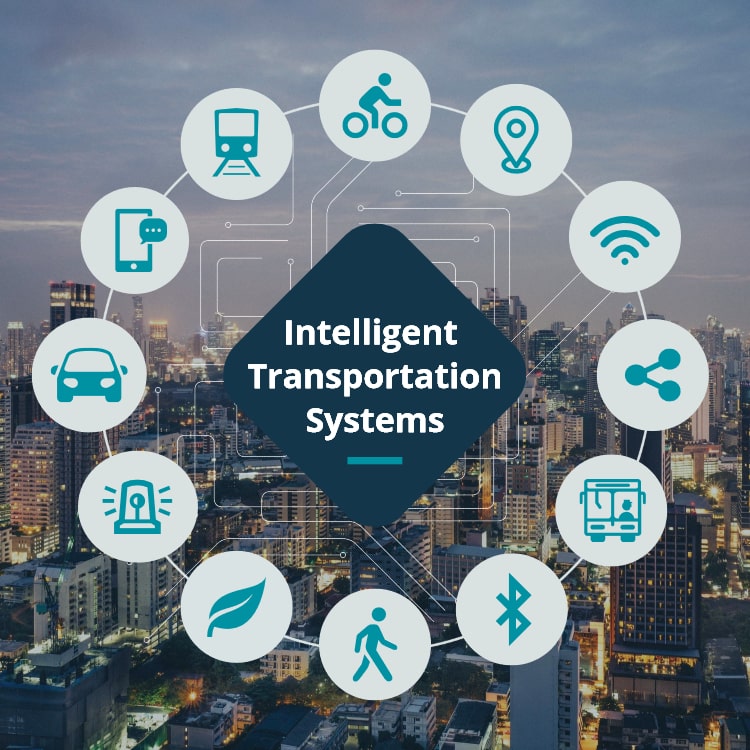Over the past century, America’s adoption of the automobile has accelerated the nation’s industrialization, created cities out of small towns, and contributed to exponential levels of growth. In 1908, Henry Ford began mass-producing the first affordable automobile, and by the end of the 1920s, there were already 23 million registered vehicles on the road in America. In 1960 that number grew to 75 million, and in 2015 the US Department of Transportation reported 263 million registered vehicles in the United States.
For many, the cultivation of American car culture represents the pinnacle of wealth and comfort, while for others our reliance on the automobile only serves in perpetuating congested streets and polluted air. While this debate pushes forward into the new millennium, cities throughout North America seek solutions through the design and development of intelligent transportation systems (ITS). The purpose of this article is to introduce the exciting concept of ITS and explain how it promises to change the world of transportation.
Objectives of Intelligent Transportation Systems
The primary function of ITS focuses on improving our transportation network through the reduction of its pressing social and environmental impacts, such as:
- reducing traffic congestion
- reducing carbon and other environmental emissions
- reducing crashes and fatalities
Put another way, these three ITS priorities help people and goods move more efficiently, more sustainably and more safely.
Establishing an ITS is complex and includes a range of information communication technologies (ICT) and sensor technologies, like radar vehicle detectors and closed-circuit television (CCTV). A variety of customizations is available for sensor technologies, software analytics and communication service providers, but the three essential roles of an ITS are:
- data collection
- data analysis
- data transmission
An ITS collects data from multiple vehicle, pedestrian and roadway sources, then analyses the data and transmits messages and information to keep people moving as efficiently and safely as possible.
Four Segments of Intelligent Transportation System
One approach to designing an ITS divides the management and responsibilities of different areas of a region’s transportation network into four separate categories. The four ITS categories are:
- Advanced Traveler Information System (ATIS): Assists with pre-trip planning
- Advanced Traffic Management System (ATMS): Manage and control traffic flow in real-time
- Advanced Public Transportation System (APTS): Increase efficiency, ridership, and reliability
- Emergency Management System (EMS): Improve response times and reduce fatalities
This kind of segmentation allows distinct agencies to find the best solution and tools for their pre-determined transportation planning objectives while still helping to establish a broad ITS network.
Methods of Information Exchange
Connected and autonomous vehicles are providing innovative approaches to ITS. A connected vehicle uses wireless ICT to transmit information about the vehicle or its location. An automated vehicle is one where the basic and safety-critical functions of driving occur without driver input, like steering, acceleration or braking. Connected, autonomous vehicles support the objectives of ITS through the transmission of information and data as well as their increased safety features. There are four different methods of information exchange occurring within an ITS:
- Vehicle-to-vehicle (V2V): Driver is alerted when another vehicle is a potential collision hazard
- Vehicle-to-infrastructure (V2I): Radar feedback signs and alerts
- Pedestrian-to-infrastructure (P2I): Non-contact crosswalk light actuation
- Vehicle-to-pedestrian (V2P): Driver alerted when crosswalk lights actuated on roadway
Vehicle-to-Everything (V2X) technology
Vehicle-to-Everything (V2X) technology integrates all three methods of connected vehicle information exchanges and uses them together to help reduce congestion, emissions, and crashes. Though highly anticipated by cities across the US and other countries, the viability of V2X is currently under scrutiny as industry officials, advocates and policymakers are deliberating on its Safety Band requirements.
The Safety Band is a “wireless spectrum at 5.9 GHz reserved for transportation-related communications among devices that support connected and automated vehicles” (U.S. DOT). The Safety Band facilitates economic and mobility growth and enables wireless functions such as traffic light control, travelers’ alerts, reduced speed warnings, and traffic monitoring. Specifically, 75 MHz of the full 5.9 GHz band is reserved for ITS services.
The Federal Communications Commission (FCC) has recently ruled that the ITS portion of the Safety Band be shared, splitting the 75 MHz segment into 45 MHz for unlicensed devices and 30 MHz for V2X technologies. Many V2X stakeholders have expressed concern with this decision, arguing that reducing the ITS portion of the Safety Band by reallocating it to “unlicensed Wi-Fi may create major safety risks and/or render transportation communications unsuccessful” (U.S. DOT). To achieve the efficiency objectives of ITS, reliable communications and information exchange are key. As such, On March 11th, 2021, a letter co-signed by the President and CEO of ITS America and the Executive Director of AASHTO was sent to Transportation Secretary Buttigieg requesting the preservation of the full 75MHz. A response from the U.S. Department of Transportation is still pending.
